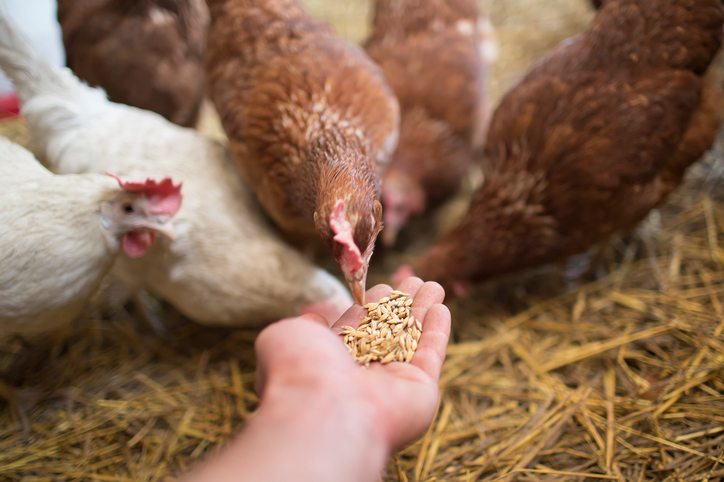If you are a poultry enthusiast, knowing how to make organic chicken feed can be tremendously beneficial. It allows you to control what goes into your chickens’ diet, ensuring they receive the best nutrition without any harmful additives. Organic chicken feed supports better health for your flock and can lead to higher quality eggs and meat.

Why Choose Organic Chicken Feed?
There are several reasons to consider making your own organic chicken feed. Firstly, it eliminates the risk of harmful chemicals and genetically modified organisms (GMOs) in your chickens’ diet. Secondly, you can tailor the feed to meet the specific needs of your flock, ensuring they get all necessary nutrients. Lastly, it can be cost-effective and sustainable, especially if you source the ingredients locally.
Understanding Chicken Nutritional Needs
Chickens, like all animals, need a balanced diet to thrive. Their diet should include a mix of protein, grains, vitamins, and minerals. The core ingredients in organic chicken feed should cover these nutritional bases.

Core Ingredients For Organic Chicken Feed
Here’s a breakdown of the primary components needed:
- Grains: Wheat, corn, and barley are popular choices. They provide essential carbohydrates for energy.
- Proteins: Soybean meal, fish meal, or peas are great for protein content. Proteins are vital for growth and egg production.
- Minerals: Oyster shells, grit, and salt. Minerals support bone development and overall health.
- Fats: Vegetable oils for energy and feather condition.
- Vitamins: Green leafy vegetables or commercial vitamin mixes.

Step-by-Step Guide To Making Organic Chicken Feed
Step 1: Gather Your Ingredients
To start, you need to gather all your ingredients. You can purchase these from local stores, organic farms, or online retailers. Ensure all ingredients are organic and free from GMOs.
Step 2: Measure Your Ingredients
Measure the ingredients accurately. Heres a simple mix to start with:
- 30% Corn
- 30% Wheat
- 20% Soybean Meal
- 10% Fish Meal
- 5% Oyster Shells
- 5% Grit
Step 3: Mixing The Ingredients
Use a large container or a feed bin to mix all the measured ingredients thoroughly. Ensure you mix them well to distribute all nutrients evenly.
Step 4: Storing Your Feed
Store the mixed feed in an airtight container to keep it fresh. Store it in a cool, dry place away from pests.

Cost-Effectiveness Of Organic Chicken Feed
Making your own feed can be more cost-effective than buying commercial organic feed. Bulk purchase of ingredients and using local suppliers can save money.
Health Benefits For Chickens
Organic feed leads to healthier chickens, better egg production, and potentially tastier meat. It reduces the risk of diseases and ensures your flock’s longevity.
Common Mistakes To Avoid
Avoid overfeeding or underfeeding your chickens. Mix the feed well to ensure even nutrient distribution. Dont ignore the cleanliness of the storage area.
Adjusting Recipes Based On Chicken Age
Adjust your recipe based on the age and size of your chickens. Younger chickens need more protein.
Alternative Ingredients
Try adding ingredients like quinoa, flax seeds, and kelp for additional nutrients.
Seasonal Adjustments
Adjust ingredients seasonally. Provide more energy-rich food during colder months.
Eco-Friendly Feeding Practices
Use locally sourced ingredients to reduce the carbon footprint. Compost any feed waste.
Case Study: Success Stories
Many poultry enthusiasts have seen tremendous improvements in their chickens’ health and productivity by switching to organic feed. [Read more about success stories](https://www.timbercreekfarmer.com/best-backyard-chickens/) [nofollow].
Conclusion
Learning how to make organic chicken feed is a rewarding process. It benefits both your chickens and the environment. By following these steps, you can ensure your flock is healthy and productive.
FAQ
What are the main ingredients for organic chicken feed?
The main ingredients are grains, proteins, fats, minerals, and vitamins.
How do I store organic chicken feed?
Store in an airtight container in a cool, dry place away from pests.
Is making organic feed cost-effective?
Yes, buying ingredients in bulk and from local suppliers can save money compared to commercial feed.
As an Amazon Associate, I earn from qualifying purchases.









